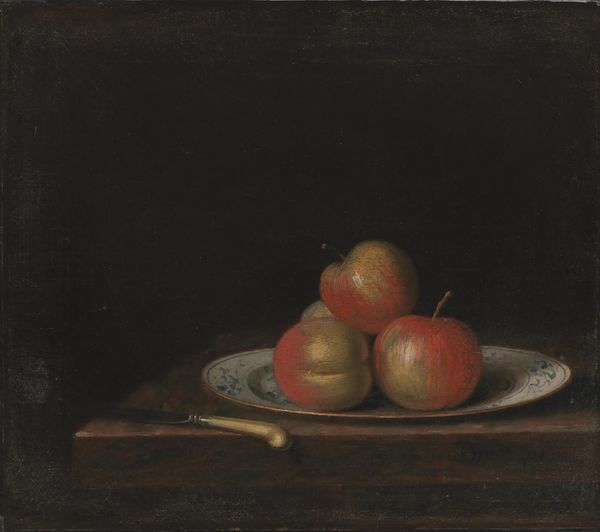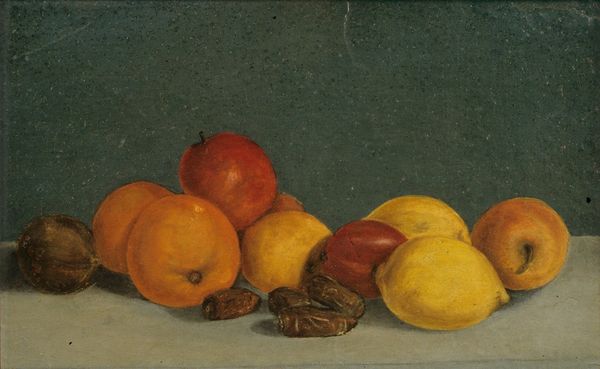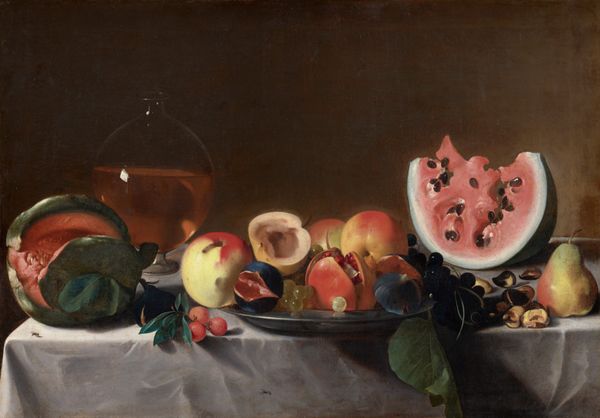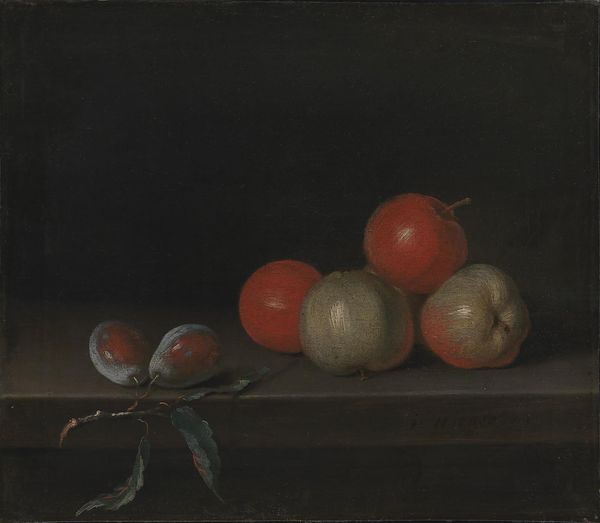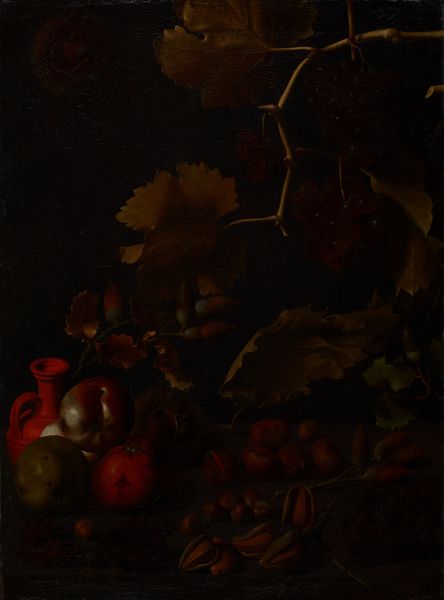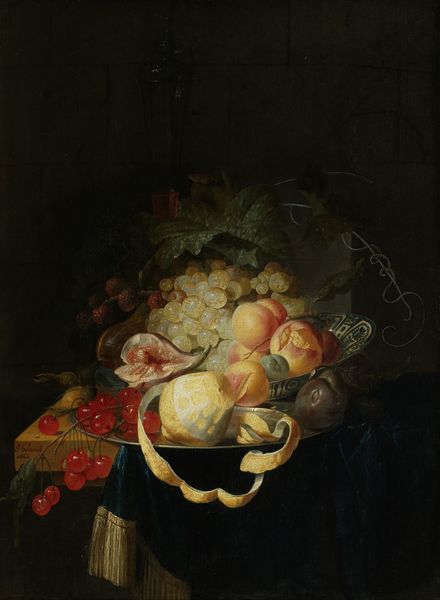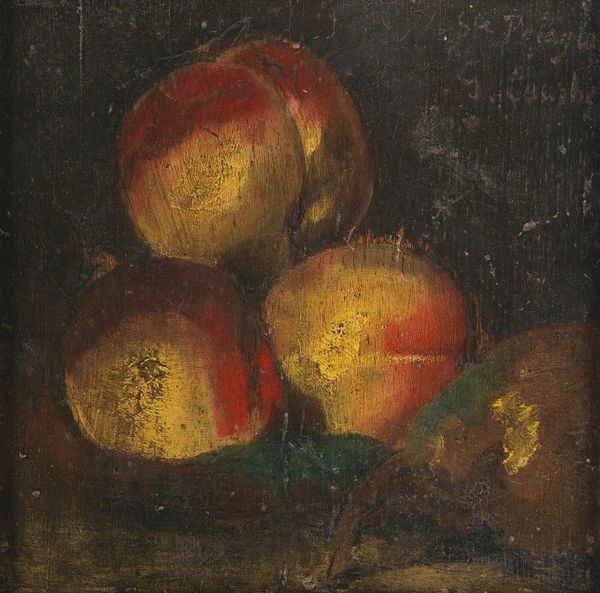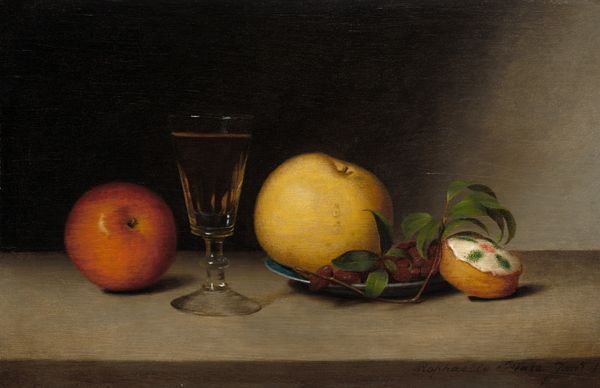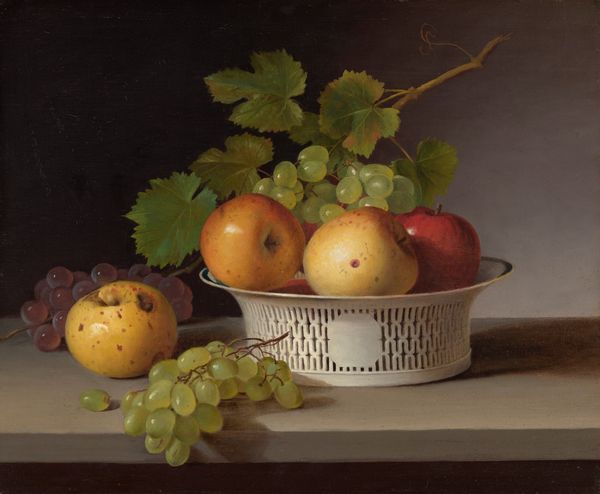
painting, oil-paint
#
baroque
#
dutch-golden-age
#
painting
#
oil-paint
#
oil painting
Dimensions: height 28.8 cm, width 21.1 cm, height 35.2 cm, width 29 cm, thickness 2.7 cm
Copyright: Rijks Museum: Open Domain
Editor: We are looking at "Four Apricots on a Stone Plinth," an oil painting created in 1698 by Adriaen Coorte. The arrangement feels very deliberate and austere, especially against that stark background. How do you approach a piece with such a focused composition? Curator: One is immediately struck by the interplay of light and shadow, isn’t it? Consider how Coorte uses chiaroscuro, the strong contrast between light and dark, to sculpt the forms of the apricots. Notice the almost geometrical precision of the stone plinth versus the organic, slightly asymmetrical shapes of the fruit. Do you see how this tension creates visual interest? Editor: Yes, it's like he’s contrasting the man-made and the natural, but in a very subtle way. What about the texture? The apricots look so velvety. Curator: Indeed. The texture is achieved through delicate layering and glazing of the oil paint. Coorte meticulously renders the subtle nuances of the fruit's skin, creating a tactile illusion. Examine how he contrasts this with the smooth, matte surface of the plinth. The difference is palpable. Editor: So the composition and technique work together to create a kind of quiet drama? Curator: Precisely. The seeming simplicity is deceptive. Through careful manipulation of form, light, and texture, Coorte elevates the mundane to something worthy of contemplation. It prompts one to ask: what meaning arises from the formal relationships created in this small, striking still life? Editor: It’s amazing how much there is to see just in four apricots! Thank you for your insight. Curator: My pleasure. These seemingly simple arrangements often reveal profound artistic intention upon closer examination.
Comments
rijksmuseum about 2 years ago
⋮
Coorte portrayed fruit with the precision of a scientist. By isolating it, it is as if he wanted to get to the very essence of a peach or a gooseberry. Although these four paintings were not conceived as a series, they have formed an ensemble since the second half of the 18th century.
Join the conversation
Join millions of artists and users on Artera today and experience the ultimate creative platform.
